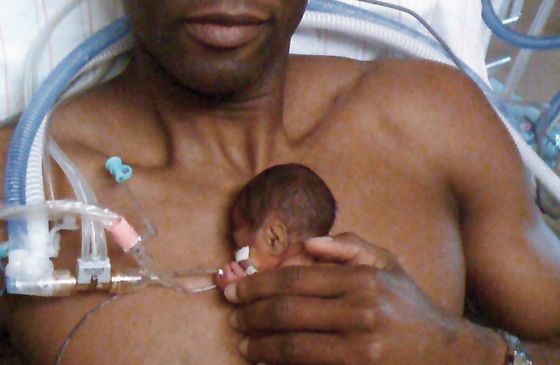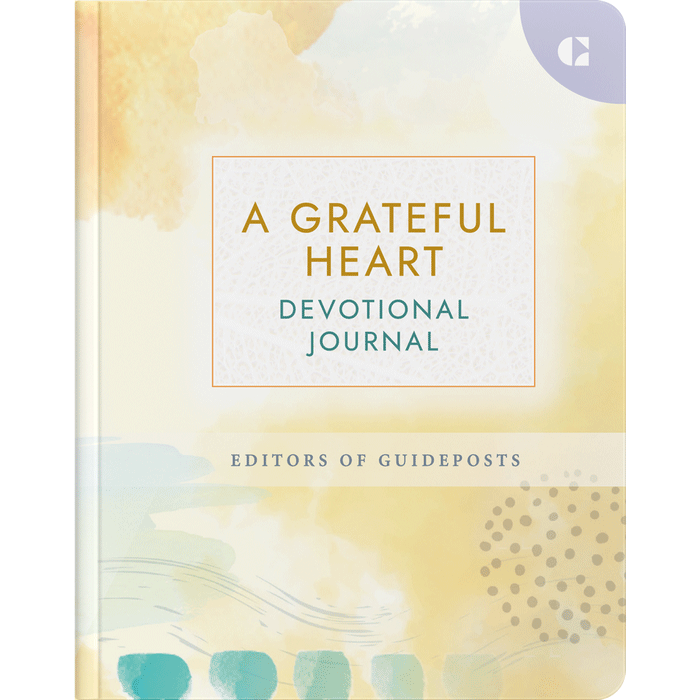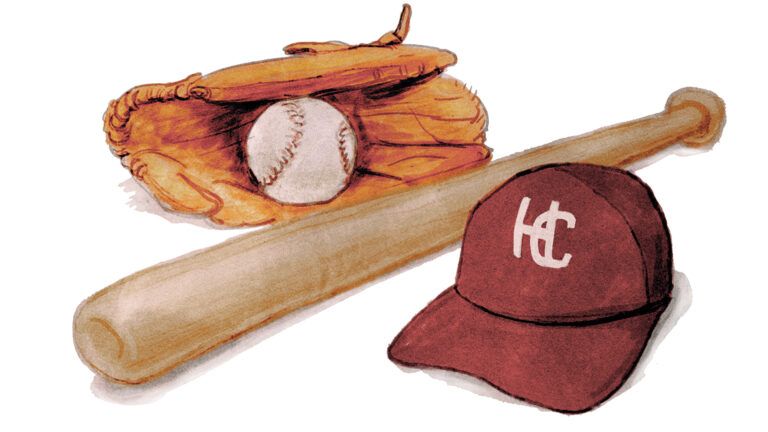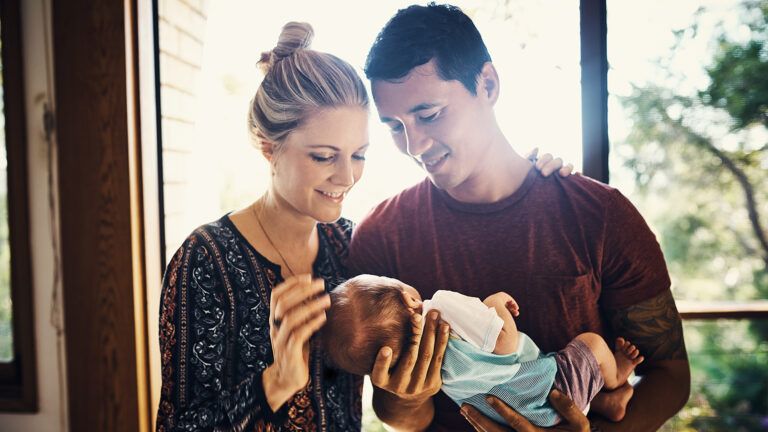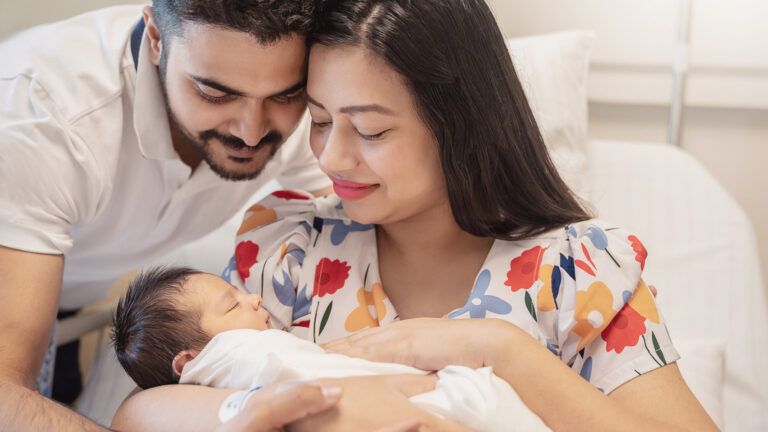I ran down the hospital corridor, the doctor’s words echoing in my mind–“You’d better come quick. We’re losing her.” My husband, Bert, and I burst through the doors of the Neonatal Intensive Care Unit and stopped short.
All those weeks of hoping, praying, I imagined the day that we’d bring our newborn girls home with us–all three of them. Never this. Two of my babies clung to life, and the third was slipping away.
The doctors stood around little Abby’s incubator, their faces drawn. The nurses who’d tended to her for weeks choked back tears. I had no reason left to hope. This is goodbye.
Not so long before, I’d given up on starting a family. I’d gotten married when I was 20, but it ended in divorce by the time I was 26. I watched my older brothers get married and have kids, while I struggled to meet someone new.
I was a sports reporter for the local TV station; there had to be some guy who would be interested in me. But nothing worked out. Countless times I cried out to God, depressed and tired of feeling so alone. When I turned 40, I thought that was it.
Until Bert came along. We met at the gym. He was ambitious, with a good job in finance. For a big, strong man, he was a softy on the inside. I fell for him in no time. He was my answer to prayer. He proposed to me at home in Phoenix–he hid the ring in my purse–and we were married nine months later.
We both wanted to have children, even though we knew that at my age, it would be problematic. The doctor told us I only had a two percent chance of getting pregnant naturally, so I underwent in vitro fertilization. Surprisingly, it worked the first time around.
Then came the sonogram. I was pregnant with identical triplet girls! I pictured us walking on the beach, the five of us hand in hand. The girls dressed in matching white sundresses with bows in their hair, kicking at the sand. It was as if God was helping me make up for lost time.
Less than five months into my pregnancy, I collapsed at work. There was a lot of bleeding. My whole body shook with fear. I was rushed to the hospital. Test after test brought more bad news.
The placenta had separated from my uterine wall. I developed gestational diabetes. The triplets contracted fetofetal transfusion syndrome–they were fighting each other for nutrients.
I prayed that I’d make it to seven months so the girls would have a better chance at life. But by six months, they were ready to come out. Two days after Valentine’s Day, Abby, Bella and Simone were born. They weighed less than 4.5 pounds…combined.
Abby and Bella underwent surgery for perforated intestines, followed by heart surgery. Simone’s lungs were collapsing. Abby needed three blood transfusions. Each procedure produced new complications.
Bert and I practically lived at the hospital, praying nonstop by their incubators and watching helplessly while the nurses administered rounds of painkillers, steroids and antibiotics. At one month old, Bella and Simone were critical but stable. It was Abby we were losing.
She’d contracted an E. coli blood infection that sent her body into septic shock.
Now I had to ask a question, though I didn’t think I could endure hearing the answer. The doctor on call was a visiting neonatologist–he practiced at the hospital only one week out of the month, but he’d been following my girls’ case closely.
“Isn’t there anything else we can do?” I said.
“Medically speaking, no,” he said. “We’ve done everything.”
“So that’s it?”
He hesitated. “I called you down here to try one last thing–kangaroo care.”
I’d spent enough time around the NICU to know a little about kangaroo care–a way for moms and dads to bond with their newborn. The baby, dressed in just a diaper, was placed on the parent’s bare chest, skin to skin.
Some mothers I’d met at the hospital swore it helped improve breathing and sleep patterns. Abby’s concerns were far graver. She was barely holding on.
Kangaroo care? That was it? Abby was about to take her last breaths; wasn’t there medicine, another surgery, a piece of machinery, anything that could help?
“We don’t fully understand kangaroo care,” the doctor admitted. “With all our technology, it seems old-fashioned. But there’s something real that happens, something mysterious, just from contact. We’ve seen it improve the survival rate of premature newborns.”
I looked down at Abby. What we needed was a miracle. The slightest intake of breath was a struggle for her. Her entire right arm was an open wound, burned by the sodium bicarbonate she’d been given to balance her toxic blood levels.
She still weighed less than two pounds, but had ballooned to twice her size from all the fluids pumped into her fragile little body. It hurt to look at her. She was dying before my eyes.
“Gayle, we have to try something,” Bert said. “Even this.” I knew he was right. Maybe kangaroo care wouldn’t heal her. It seemed so basic after all the doctors had done, all that technology and knowledge. But it was a chance to say goodbye. I’d hold her close so she’d know I loved her. One last time.
The nurse placed Abby in my arms and wrapped a blanket around us. I was afraid I might hurt her. I held her gently against the warmth of my skin, singing “You Are My Sunshine,” not sure if she could hear me. It’s okay, Abby. You don’t have to hold on any longer.
My tears dripped onto Abby’s head. I thought of my perfect family image on the beach. The picture had changed. Now there were two girls instead of three. No! I thought. I don’t want to let you go. I didn’t want to change the picture.
I pressed Abby closer to my chest. Don’t go! You are so loved. Your sisters need you. Dad needs you. I need you. Don’t go, my sweet girl. I felt my words go through me to her. Could she hear me? She didn’t move, but I could sense the faintest heartbeat. It seemed to be growing stronger.
I held her for an hour, feeling the tiny thump, thump against my chest. Next it was Bert’s turn. He closed his eyes, cradling her close. She looked so small against his bare chest. “Stay with us, Abby,” he whispered.
The nurse put Abby back into her incubator. We huddled around and watched her vitals. Come on, Abby. Her blood pressure started to rise. I squeezed Bert’s hand. Her oxygen levels were stabilizing. Her heart rate was too. You can do it, Abby!
Abby was still weak, but she made it through the night.
We continued doing kangaroo care with Abby as often as we could. After more than 13 weeks in the intensive care unit, we brought the girls home–all three of them. The doctors couldn’t explain Abby’s recovery.
“Perhaps the child needs to know someone out there loves them,” one of the neonatologists suggested. “You do all you can medically. Sometimes, though, it takes a different power.”
Love is that power. I have no doubt whatsoever that love brought Abby back from the very brink of death when all else failed and all hope was gone. It was love that gave my daughter life.
Download your FREE ebook, Mysterious Ways: 9 Inspiring Stories that Show Evidence of God's Love and God's Grace
